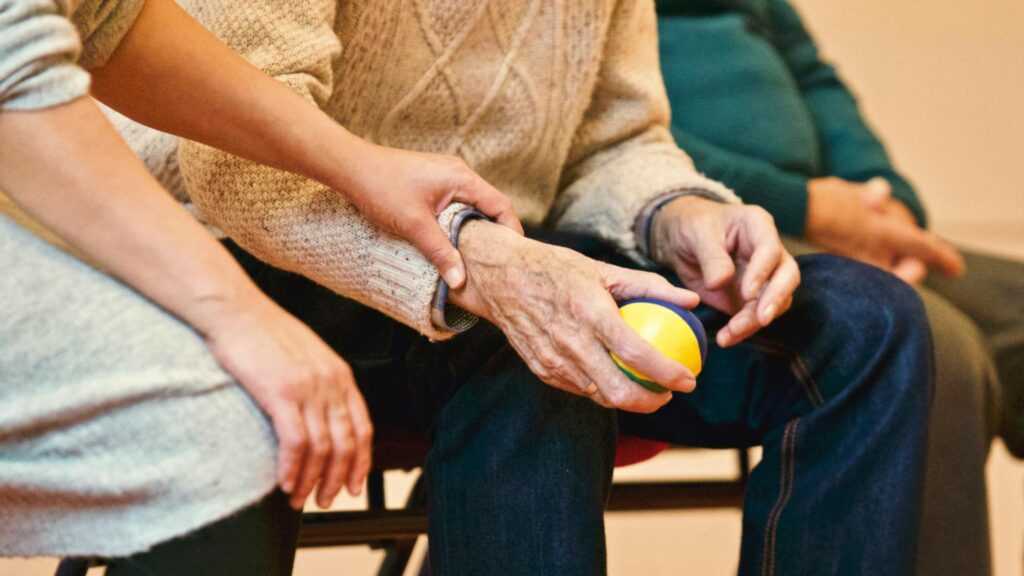Rapid Shifts in Anxiety Treatment
2026 stands out for one reason: mental health care isn’t just changing it’s getting rewritten. After decades of leaning hard on talk therapy and medication, we’ve hit a point where that standard toolkit feels… incomplete. The results aren’t terrible, but they aren’t consistent either. People are tired of feeling stuck between waitlists, trial and error prescriptions, and surface level conversation. They want clarity. They want solutions that actually stick.
This year marks a broader turning point a convergence of science, tech, and public pressure for mental health services that are flexible, data driven, and human. Anxiety, in particular, demands nuance. One size fits all models are aging fast. And in their place? Tools that listen better, adapt faster, and reach people earlier.
The demand is simple but loud: real help, tailored. That’s what 2026 is starting to deliver.
Blending Innovation with Evidence
Anxiety treatment has entered a pragmatic era. The goal isn’t just novelty it’s proof. In 2026, the most exciting developments aren’t coming from fringe ideas, but from tested, research backed technologies that actually move the needle for people struggling with chronic anxiety.
We’re seeing structured platforms that mix science and accessibility. Apps grounded in clinical trials. AI tools built on peer reviewed methodologies. These aren’t experiments anymore they’re usable, scalable therapies. Digital first tools like teletherapy platforms, CBT chatbots, and mood tracking apps are reducing the friction between someone recognizing they need help and actually getting it.
But it’s not just digital efficiency. The tone is shifting to whole person care. That means targeting the psychological, physical, and behavioral dimensions of anxiety at once. Personalized plans that consider sleep, nutrition, movement, relationships all connected through tech and data are becoming mainstream. People don’t want segmented fixes. They want integrated support that adapts to the way they live, not the other way around.
This isn’t the future of care. It’s the present. And it’s working because we now have the data to back up what holistic thinkers have long suspected: treating a person, not just a diagnosis, leads to better outcomes.
Tech Driven Approaches
In 2026, technology continues to transform anxiety treatment in ways that were barely imaginable a decade ago. These innovations aren’t replacing human care they’re enhancing it, offering scalable, customizable, and often more immediate interventions.
Virtual Reality (VR) Exposure Therapy
VR exposure therapy is gaining momentum as a powerful tool for treating phobias and trauma related anxiety disorders. By immersing patients in controlled, simulated environments, therapists can help clients desensitize to stress triggers without real world risk.
Creates realistic yet safe environments to face fears
Useful for conditions like PTSD, social anxiety, and specific phobias
Helps increase patient engagement and reduce treatment avoidance
AI Guided Cognitive Behavioral Therapy (CBT) Apps
Artificial intelligence has enabled a new generation of mental health apps that deliver CBT techniques with surprising accuracy and empathy. These systems adapt to user input, making each session feel more personalized than traditional digital tools.
On demand support for managing thoughts and behaviors
Offers guided exercises and progress tracking
Available 24/7, reducing barriers to consistent treatment
Neurofeedback and Biometric Monitoring
For individuals dealing with chronic anxiety, real time insights into their own physiological signals are proving invaluable. Tools that track metrics like heart rate variability or brainwave activity now offer immediate feedback that can help regulate overactive stress responses.
Monitors brain and body activity to detect early signs of anxiety
Allows users to practice self regulation techniques more effectively
Can be integrated with wearables and mobile apps for real time adjustment
These approaches mark a shift from one size fits all treatment models toward adaptable, data informed care. As research continues to validate these tools, more practitioners are incorporating them as part of comprehensive therapy plans.
Psychedelic Assisted Therapy: What’s New

2026 is a turning point for psychedelic assisted therapy. Both MDMA and psilocybin are now nearing formal approval in multiple countries, thanks to late stage clinical trials showing strong results for treatment resistant anxiety and PTSD. These substances with the right structure and guidance aren’t fringe anymore. They’re being tested, validated, and in some cases, mainstreamed.
More important: it’s not just about the trip. Long term data shows lasting decreases in anxiety symptoms when psychedelic sessions are paired with structured talk therapy. Patients report fewer relapses, stronger emotional resilience, and improved connection with others. The caveat? These outcomes rely heavily on preparation, skilled guidance, and proper integration.
That’s fueled a fast evolution in ethical frameworks. The industry is pushing for higher standards: therapist certification programs focused specifically on psychedelic care, renewed attention to patient consent, and clearer models for cultural sensitivity. Unlike earlier wellness trends, this one isn’t DIY trained facilitators are part of the treatment, not an optional extra.
If used with intention, these therapies aren’t just breakthroughs. They’re a reset.
The Role of Lifestyle Centric Models
The integrative path to managing anxiety is no longer fringe it’s hitting the mainstream. People aren’t just looking for meds and talk therapy anymore. They’re building routines that include what they eat, how often they move, and even how they breathe. Vloggers, influencers, and clinicians alike are pushing a simple message: your lifestyle matters.
Nutrition is a big one. Functional practitioners report that dialing in gut health cutting ultra processed food, layering in omega 3s, stabilizing blood sugar can make a real dent in anxiety symptoms. Movement, too, isn’t just about getting fit. Structured practices like yoga, walking meditations, even strength training are used to regulate the nervous system.
Mindfulness has gotten more practical. It’s not all incense and hour long sits anymore. Micro meditations, breathwork apps, and journaling routines are now core parts of therapy plans. And it’s working. Therapists using these whole body models report greater adherence and stronger outcomes especially in cases where medication alone stalled out.
Functional medicine sits at the core of this shift. It looks at root causes nutrient imbalances, inflammation, lifestyle stressors and blends multiple fields to restore balance. It’s not DIY wellness guesswork, either. More practitioners across disciplines are trained in integrative protocols.
Real world cases underscore this change. One clinic in Colorado saw a 40% drop in generalized anxiety symptoms after just eight weeks of combined lifestyle interventions. Another pilot study tracked mood markers in patients following personalized wellness plans and found consistent improvement tied to movement and mindful eating.
Bottom line: anxiety care in 2026 doesn’t belong to one playbook. It’s layered, personalized, and often driven by how people live day to day. For a deeper look at how integrative therapies are evolving, Explore our guide to integrative anxiety therapies.
Accessibility & Equity in Emerging Therapies
Breaking Down the Cost Barrier
While anxiety treatments are advancing rapidly, affordability remains a major obstacle. From VR therapy sessions to psychedelic assisted care, many of the newest options are not yet widely covered by insurance providers. This limits access for individuals who could benefit most.
Key barriers:
High out of pocket costs for specialized therapies
Limited insurance coverage for experimental or tech based treatments
Disparity in access between urban and rural communities
Community Led Virtual Models On the Rise
To counter traditional access issues, community driven digital platforms are stepping in. These models offer flexible, often lower cost alternatives while maintaining therapeutic value through peer support, guided programs, and licensed professionals.
Notable trends:
Virtual support groups facilitated by trained moderators
Subscription based therapy apps providing sliding scale pricing
Local nonprofit driven programs expanding their reach through telehealth
Ensuring Equitable Access to Innovation
It’s vital that emerging therapies not become the privilege of a select few. Inclusivity across race, socioeconomic class, geography, and gender identity must be built into how treatments are developed and distributed.
Strategies for inclusivity:
Clinical trials that represent diverse demographics
Language accessibility and culturally competent care models
Policy shifts that incentivize affordable, tech enabled care for underserved populations
Bottom line: The future of anxiety treatment must be as inclusive as it is innovative. Without intentional steps toward equity, even the most promising new approaches will fall short of their true potential.
What Practitioners Are Saying
Shifting Standards in Therapist Training
As treatment modalities evolve, the expectations for mental health professionals are rising in tandem. Therapists are now expected to move beyond traditional credentials and develop competencies in cutting edge techniques.
Expanded certifications in areas like psychedelic integration therapy, neurofeedback, and digital mental health tools are becoming more common.
Continuing education programs now include modules on AI driven cognitive behavioral therapy (CBT), VR therapy, and integrative care.
There is a growing emphasis on interdisciplinary knowledge, blending psychology, neuroscience, and holistic wellness.
Responding to Patient Demand
The rapid adoption of alternative and tech augmented therapies is not being driven by research alone patients are pushing the field forward.
Clients are asking for treatments that go beyond traditional talk therapy, including experiential interventions and personalized care models.
Younger demographics in particular seek therapists who are fluent in emerging technologies or holistic protocols.
As a result, therapists are reassessing their priorities, often retraining to meet these evolving needs.
Balancing Innovation with Safety
As creative treatment options become more mainstream, issues around patient safety and ethical implementation come into sharper focus.
Standardized safety protocols are being developed for psychedelic assisted sessions, biometric monitoring, and immersive technologies.
Clinical organizations are prioritizing risk evaluation frameworks that account for both psychological and physiological factors.
There’s a collective movement toward establishing guidelines that support innovation without compromising care integrity.
Practitioners in 2026 are charting new territory but doing so with an increasing sense of responsibility. The goal: offer transformative care while maintaining the highest possible standard of safety and professionalism.
Navigating the Options Moving Forward
The mental health space isn’t what it was five years ago and that’s a good thing. But with more therapy models, apps, supplements, wearables, and retreat style programs popping up, the real question is: what actually works?
For individuals, the first step isn’t choosing a therapy it’s getting clear on your baseline. What do your symptoms look like day to day? What’s already helping, even a little? Set goals that matter to you, not just symptom reduction but quality of life: better sleep, stable energy, less fear around triggers. Then start small, track results, and be relentless about asking: is this worth my time, money, and mental bandwidth?
Watch for red flags. Anyone promising instant cures, pushing too hard on one size fits all methods, or sidelining safety and credentials those are signs to walk. On the other hand, real breakthroughs often feel grounded: slow changes, better regulation, fewer spirals. Therapies that build long term capacity not dependency are a better bet.
The future of mental health isn’t just about access or efficiency. It’s about freedom. Freedom from anxiety running the show. Freedom to move through the world with more agency and less noise. And that means making informed, self respecting choices one step at a time.


